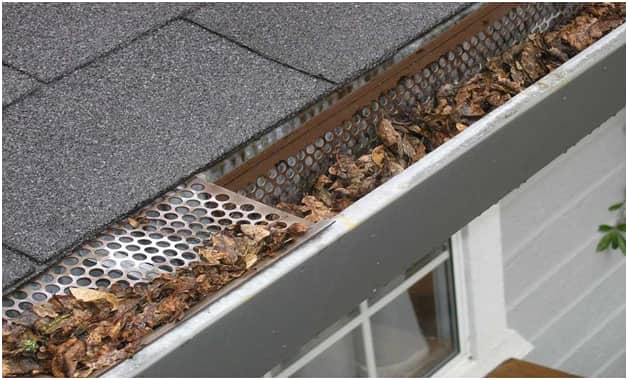
Basement Waterproofing How To
Water in your basement should be taken seriously. Even the smallest puddle or tiniest trickle is likely a sign of an even bigger problem, and what seems like an insignificant amount of moisture over time can result in a build up of toxic mold or structural damage to your home. So what can you do to keep your basement dry?

Basement
1. Improve Drainage Around Your Foundation.
1.1 Improve the Grade of Your Yard.
Look at the ground around the exterior of your foundation. It should slope away from the house. If it does not, that area can be re-landscaped to provide better drainage away from your house. Typically a contractor can help you improve the gradient and direct surface water away from your basement, using heavy machinery. Now lets get into basement waterproofing how to!
Analyze Your Soil Composition. Soil composition also contributes to poor drainage. In New Jersey, Pennsylvania, and New York, many homes are built on dense, clay-like soil that does not drain well. This soil can be amended with loam or other more loosely-packed soil types to improve drainage, or, once again, the soil around the foundation can be regraded to allow water to run off, diverting it away from the foundation of your home.
1.2 Install a Sump Pump.
If the slope cannot be improved or if the soil around your foundation does not drain easily, you may need a sump pump as well. A sump pump will collect water from around your foundation and pump it outside, away from your house.
1.3 Clean Your Gutters.
A common problem contributing to poor drainage and water coming in through the foundation is poorly installed gutters or gutters that are not maintained. Gutters are designed to collect run off from your roof and direct it away from your foundation. If your gutters are overflowing because they are blocked by debris, or, if your gutter downspouts are not directing the water as far from the foundation as needed considering the soil and the slope of your yard, they are not doing their job.

Clean the Gutters
2. Waterproof Your Interior.
2.1 Repair Cracks and Holes.
First, inspect your interior walls and floors – are there cracks or holes allowing water into your basement? Also take a look at your doors and windows – is any water entering your basement from those areas? If so, these areas must be repaired and made watertight. Special sealants and caulks can be used to repair this type of damage and make these areas watertight. Home improvement stores will have appropriate products. This can be done by the average homeowner without professional assistance, if he or she reads the directions carefully and abides by the safety precautions.
2.2 Seal Floor and Walls.
There are products that can be used to prevent condensation on the walls and seepage through the floor of your basement, among them silicate-based sealants and other coatings. These are applied like paint and create a waterproof barrier, but must be reapplied over time. Sealants are generally used in conjunction with other methods of waterproofing, such as regrading the soil around the perimeter of the foundation, installing a sump pump, or installing a French Drain or Footing Drain.
2.3 Install a French Drain.

Another more labor-intensive method of waterproofing your interior is to have a French Drain installed. This involves excavating a trench around the inside perimeter of your basement down to the foundation footing. A layer of stone is laid down, and a system of perforated drain pipes are laid on top of it. Once completed, the excavated area save for a small gap by the wall is concreted over. The drain pipe system can then direct any water seeping through the walls to a sump pump, which pumps the water outside and far away from your foundation.
2.4 What About Waterproofing Paint?

Latex Paint
We get this question from homeowners all the time. In short, most store-bought “waterproofing sealant” is merely latex paint.
The problems with using latex paint as a waterproofing sealant are threefold:
● Eventually latex paint will crack and peel having been exposed to specification, which is lime coming from the concrete.
● Latex paint can not prevent efflorescence (white powder) from forming on the concrete.
● Latex paint is porous and cannot stop water vapor or moisture from seeping through the concrete or condensing on the concrete.
Commercial silicate-based penetrating sealer is far superior to latex paint in all respects. These can be difficult for the average homeowner to apply safely and effectively.
3. Waterproof Your Exterior.

Exterior Design
There are methods to block water from entering your home, as well as methods to direct water away from your home. These are typically used in conjunction with one another, and combined is a much larger undertaking than the methods used to waterproof the interior of the basement.
3.1 Seal the Exterior Foundation Wall.

Waterproofing
Waterproofing the exterior of your foundation requires excavation of the soil around the foundation down to the footing. This is a big job, typically requiring a specialist and heavy machinery. Once the soil around the foundation has been removed, a sealant is applied to the walls of the foundation. A physical waterproof barrier may also be applied to the exterior foundation wall.
3.2 Install a Footing Drain System.
Ideally exterior waterproofing would have been done during the construction phase of your home, but many times this is not the case. In either case, the right type of loan for a renovation or new build will assist you in larger repair or renovation tasks such as exterior waterproofing. Older homes were built prior to the latest, most waterproofing effective methods and products. In this case, homeowners who have decided to waterproof the exterior of the foundation frequently opt for a second line of defense against leaks – an external drainage system called a “footing system.” This is similar to the interior French drain but involves installing a rock bed around the base of the foundation on the outside, and excavating a trench for a large diameter pipe to direct the water away from the home.
Whether you have water in your basement right now, or you want to be proactive and prevent any water issues in the future, an experienced basement specialist can help you decide what methods would be most effective considering your situation. Dry Basement Solutions is one such specialist


Comments are closed.